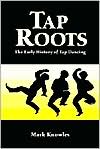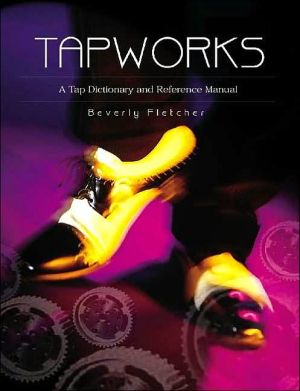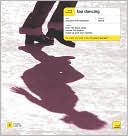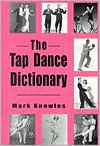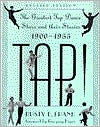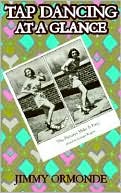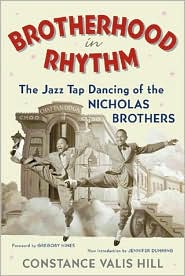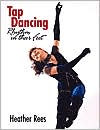Tap Roots: The Early History of Tap Dancing
Tracing the development of tap dancing from ancient India to the Broadway stage in 1903, when the word "Tap" was first used in publicity to describe this new American style of dance, this text separates the cultural, societal and historical events that influenced the development of Tap dancing. \ Section One covers primary influences such as Irish step dancing, English clog dancing and African dancing. Section Two covers theatrical influences (early theatrical developments, "Daddy" Rice, the...
Search in google:
Tracing the development of tap dancing from ancient India to the Broadway stage in 1903, when the word "Tap" was first used in publicity to describe this new American style of dance, this text separates the cultural, societal and historical events that influenced the development of Tap dancing. Section One covers primary influences such as Irish step dancing, English clog dancing and African dancing. Section Two covers theatrical influences (early theatrical developments, "Daddy" Rice, the Virginia Minstrels) and Section Three covers various other influences (Native American, German and Shaker). Also included are accounts of the people present at tap's inception and how various styles of dance were mixed to create a new art form. Library Journal Having conducted extensive research on the origins of tap, choreographer Knowles (American Acad. of Dramatic Arts, Los Angeles; The Tap Dance Dictionary) here discusses this art form in terms of three broad influences: primary, theatrical, and "other." Primary influences includes Irish (clog), English, African, West Indian, and Plantation styles, while theatrical influences incorporate the worlds of minstrel, vaudeville, and music hall. Other influences include Indian, Gypsy, German, Shaker, Native American, and American country quite a variety. Knowles successfully interweaves the immigrant and slave influences on the dance that slowly evolved into early tap and adds a bit of early theatrical history when profiling the careers of "Daddy" Rice, Master Juba, and others. He concludes that the development of any dance form is linked to climatic, geographical, and economic factors, as well as costume. Basically an academic text for dance and theater history courses, this book includes reproductions of sheet music covers, photos, and playbills that reflect the times. Recommended for academic libraries. Barbara Kundanis, Batavia P.L., IL Copyright 2002 Cahners Business Information.
AcknowledgmentsList of IllustrationsPrefacePt. IPrimary InfluencesCh. 1Irish Influences7Ch. 2English Influences15Ch. 3African Influences22Ch. 4Dance in the West Indies27Ch. 5Dance in New Orleans34Ch. 6Dance on the Plantation38Ch. 7Slave Religion and the Ring Shout55Ch. 8Dispersion of African-American Dances63Pt. IITheatrical InfluencesCh. 9Early Theatrical Developments73Ch. 10"Daddy" Rice78Ch. 11The King of Diamonds and Master Juba86Ch. 12The Virginia Minstrels93Ch. 13The Development of the Minstrel Show100Ch. 14Black Minstrelsy and Musical Theatre117Ch. 15Other Forms of Entertainment127Ch. 16Vaudeville135Ch. 17English Music Hall150Ch. 18Women on the Stage156Pt. IIIOther InfluencesCh. 19Indian, Gypsy, and Spanish Influences167Ch. 20German and Shaker Influences174Ch. 21Native American Influences182Ch. 22American Country Dance190Ch. 23Conclusions200Notes211Bibliography249Index259
\ Library JournalHaving conducted extensive research on the origins of tap, choreographer Knowles (American Acad. of Dramatic Arts, Los Angeles; The Tap Dance Dictionary) here discusses this art form in terms of three broad influences: primary, theatrical, and "other." Primary influences includes Irish (clog), English, African, West Indian, and Plantation styles, while theatrical influences incorporate the worlds of minstrel, vaudeville, and music hall. Other influences include Indian, Gypsy, German, Shaker, Native American, and American country quite a variety. Knowles successfully interweaves the immigrant and slave influences on the dance that slowly evolved into early tap and adds a bit of early theatrical history when profiling the careers of "Daddy" Rice, Master Juba, and others. He concludes that the development of any dance form is linked to climatic, geographical, and economic factors, as well as costume. Basically an academic text for dance and theater history courses, this book includes reproductions of sheet music covers, photos, and playbills that reflect the times. Recommended for academic libraries. Barbara Kundanis, Batavia P.L., IL Copyright 2002 Cahners Business Information.\ \ \ \ \ BooknewsAn investigation into the influences on American tap dancing. Knowles (American Academy of Dramatic Arts) identifies English clog dancing, Irish step dancing, and African dancing as the primary influences on the art form and devotes separate chapters to explaining the dances both as art and as social practice. Further chapters explore similar themes related to theatrical influences and other influences such as Native American and Asian dances. Annotation c. Book News, Inc., Portland, OR (booknews.com)\ \
